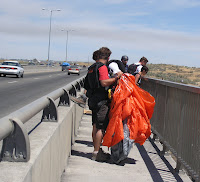Mr. Odell was a man I never met or never knew his name. But I knew his brand very well. In fact, I spent many afternoons as a kid with his products.
Jack Odell was founder and chief designer of Matchbox cars. He understood the connection between boys and cars - even at a young age. Every little boy I know loves cars. Toy cars are the perfect metaphor for rough and tumble tykes. Full of motion and noise, they glide through life, sometimes running into walls, often wiping out.

Though his Matchbox cars have been absorbed into the Hot Wheels brand, the legacy of his innovative concept lives on.
Both Hot Wheels and Matchbox brands work on so many levels, both conceptually and functionally. They are great toys for kids, and lend themselves perfectly to marketing, allowing a range of companies to provide designs for vehicles and car graphics alike (car companies actually provided plans to Matchbox in the early days to ensure accurate designs). They also work well to sell tracks and playsets (you need somewhere to drive all those cars, right?). And amid all of this possibility, they remain highly affordable, especially relative to other toys (you can still get the real thing for a buck).
So here’s to Jack Odell and his very impressive versatile miniature cars!


















































